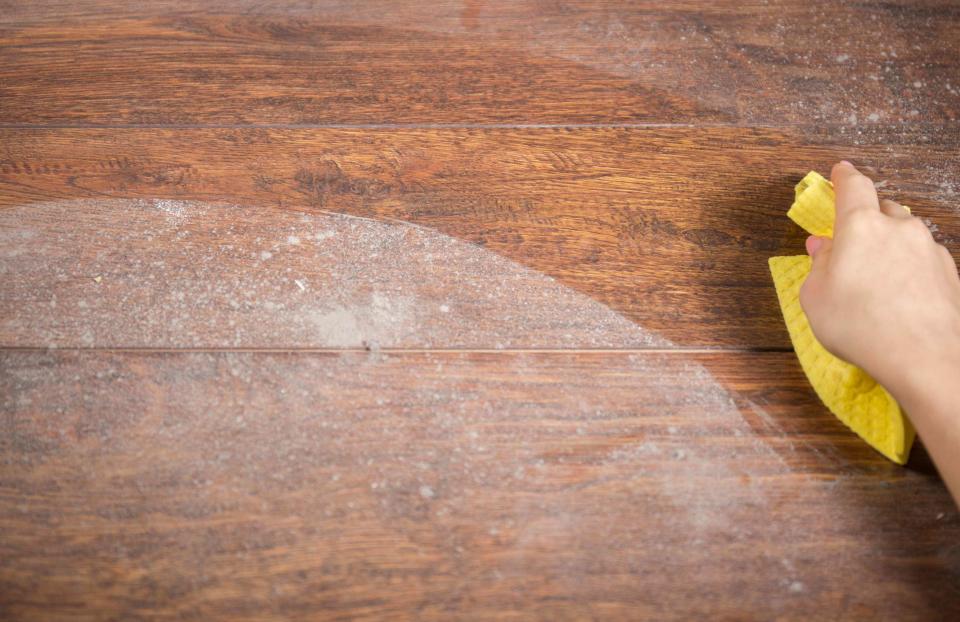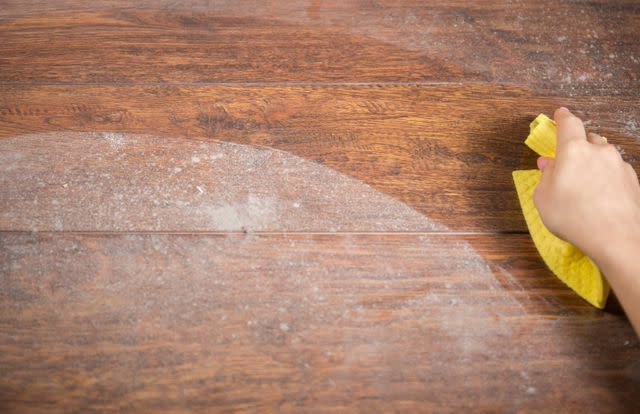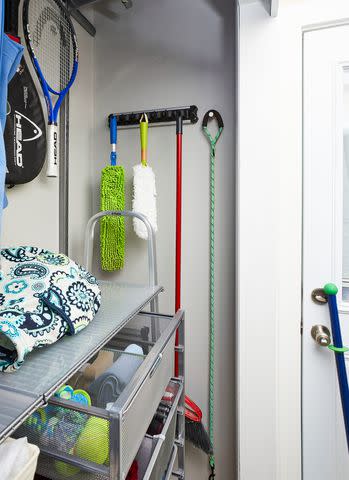Why Is My House So Dusty? 4 Common Causes of Dust
Get rid of dust before it accumulates.

Katarzyna Bialasiewicz / Getty Images
Fact checked by Marcus Reeves
Dust is a common household problem that we deal with daily, despite regular cleaning. Excessive dust is unsightly and can cause allergies, asthmatic attacks, and other health issues. Plus, dust is made of pretty yucky stuff: dead skin cells, pet dander, dirt, and clothing fiber, among other things. However, the amount of dust accumulating in your home depends on various factors, including the season, how many people live in your home, the types of pets you have, and how often you clean or vacuum.

KatarzynaBialasiewicz / Getty Images
What is dust and where does it come from?
“Household dust is a complex matrix of components including dust mites, dust mite feces, bacteria, mold, pet dander, small insects, pollen, and particles. Dust mite droppings, dead bodies of dust mites, pet dander, and small insects are included as allergens,” says Ketan Patel, design manager of floorcare at Dyson.
Additionally, outside dust is a major contributor to indoor dust. It finds its way into your home through unsealed windows and doors. Shoes, clothing, and pet paws can also bring in sand, gravel, and soil that contribute to further buildup. Dust can even contain harmful substances, such as trace metals, antibiotic-resistant germs, microplastics, and other harsh chemicals.
Related: 10 Places You're Forgetting to Dust in Your Home
What are common sources of dust?
If you’re wondering, “Why is my house so dusty?” You are not alone. Even with frequent cleaning, dust persistently reappears. Some of the common causes include:
High Humidity
Humidity affects the number of allergens in indoor air. High humidity levels provide the perfect environment for dust mites and mold colonies to thrive. Also, high humidity levels make dust particles stick to each other, making them much harder to remove. To keep humidity levels under control, use dehumidifiers or air conditioners to decrease moisture to ideal humidity levels, between 40% and 60%. Using air conditioners, rather than opening windows, can also prevent indoor pollen.
Faulty HVAC Systems
An HVAC system is the first line of defense against indoor dust. When dust enters your home, the system should suck up the particles through the vents and remove them through air filters. A faulty HVAC system with degraded filters or leaking ductwork will leave your house dustier than usual. Always ensure that your HVAC system is well-maintained and in good working condition. Replace air filters every three months or as frequently as the manufacturer recommends.
Vacuum Cleaning
Most people assume vacuuming is the easiest way to get rid of dust. However, some vacuum cleaners release excess dust and contaminants into the air, making your home feel dustier after you’ve cleaned. The best way to eliminate this problem is to invest in vacuums with high-efficiency particulate air (HEPA) filtration systems or try wet vacuums, which trap dust in a water container that prevents it from going airborne.
External Factors
If you live on a busy street with traffic or near a factory or mine, you will likely experience more dust than homes without these factors. Open doors and windows can let dust creep indoors. The best solution is to seal windows and doors and any other cracks and crevices that are possible dust entryways. Dust also hides in cloth and clutter. Regular washing of carpets, textiles, stuffed animals, garages, and attics can go a long way.

What can you do to reduce dust in your home?
Mary Gagliardi, Clorox's in-house scientist and cleaning expert, says “you can make some simple changes, like removing shoes before entering your home, but it’s a perfect idea to accept that a good cleaning routine is necessary to keep dust under control and then stick to it.”
First, establish a few simple house rules that can really make a difference:
No shoes in the house
No outside clothes on the bed
Wash pets, clothes, coats, and stuffed animals regularly
When cleaning each room, Gagliardi says to “start at the top of the room and work down, so any dust that falls while you are working will be picked up by the time you are working at floor level.” This includes wiping down fans and vent blades. “Remove dust and grime from overhead surfaces that you may otherwise miss: the narrow top of painted picture rails, door trim, doors, the tops of painted kitchen cabinets and baseboards.”
Also, vacuum upholstery and curtains regularly. Although patterns and fabrics hide it well, dust hides on sofas, chairs, throw pillows, and window treatments. Use a vacuum with a HEPA filter that traps allergens. Lastly, Gagliardi advises emptying the canister or switching out the filter bag outdoors. After all that hard work, you want to avoid re-introducing dust to any areas you just cleaned.
Related: Use Our 30-Day Cleaning Checklist for a Sparkling Home
For more Better Homes & Gardens news, make sure to sign up for our newsletter!
Read the original article on Better Homes & Gardens.

